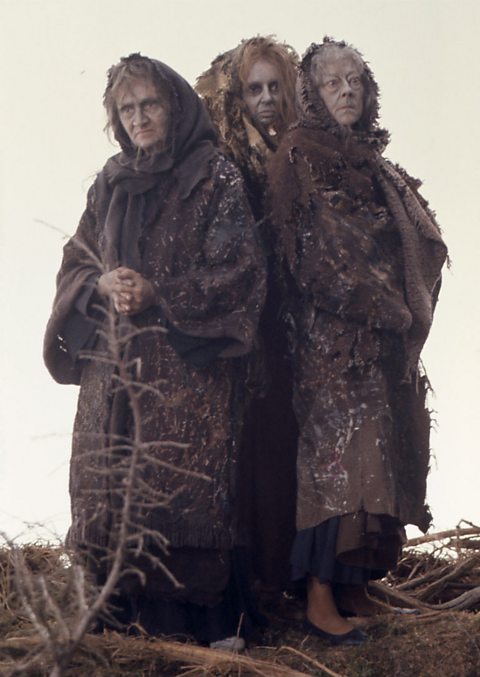Casting choices in Macbeth
One of the first and probably most important jobs for the director of a play is to choose a cast. Choices that are made will heavily depend on the look and feel that the director wants for the production of the play. One of Shakespeare's strengths is that his plays are open to a variety of interpretations; for instance he gives away very little about how he thinks characters should look. So it will all be down to what the director thinks, making casting decisions quite crucial.
It will also be vital to get the right combination of actors who will be able to work with each other. The Macbeths, for instance, need to work together as a couple. Banquo is a father; the audience have to believe that Fleance is his son. Duncan is likely to be older than the other characters. Macduff might need to be physically different from Macbeth so that the audience can distinguish between them more easily.
The Witches

Of all the characters in Macbeth, probably the most open to different interpretations are the Witches. They are the first characters to appear in the play and therefore set the tone of everything that follows. Macbeth was written and first performed at a time when fear of witches was at its height and although there is no way of knowing exactly how the Witches were originally portrayed, they must have made quite an impact. In Shakespeare's time, women were not allowed to act on stage so men would have played. However, there would have been no suggestion that the Witches were not female.
Traditionally, the Witches have been presented as sinister old women with evil powers. Modern directors, however, would probably see this as a stereotypeA conventional and standard view of someone or a type of people. and would try to find something more meaningful to today's audience. The Witches have also been presented as:
- fortune tellers
- voodoo priestesses
- identical triplet sisters
- backing singers in a rock group
- teenage goth schoolgirls
- young children on a run-down council estate
- bin men
Nor do there have to be just the traditional three of them. In one production there were thirteen witches (note the significance of the number) ā with the actors doubling upA theatrical term used to indicate when an actor is playing more than one part in the play. the other parts in the play, including Macbeth himself. This clearly emphasised the theme of evil and how all the characters are touched by it.
How you might approach the casting of the Witches if you were in charge of a production?